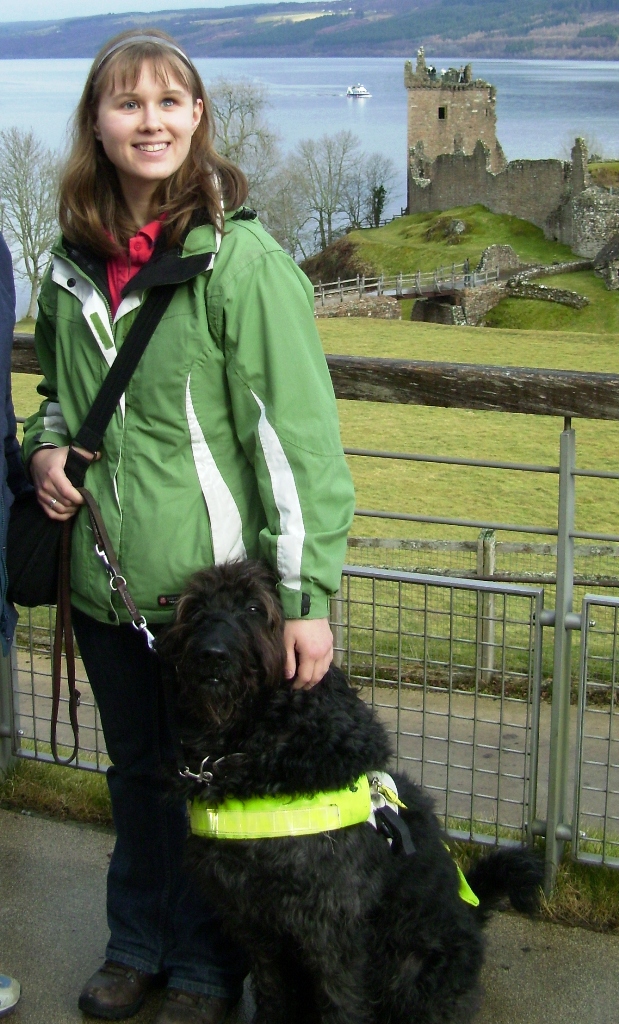Group seeks to make information accessible to all
February 4, 2013
Share
 Third year law student Susan Croft in Scotland with her with her working dog, Andy.
Third year law student Susan Croft in Scotland with her with her working dog, Andy.Susan Croft sits on a couch in the lounge on the lower left of Sir John A. Macdonald Hall, her shaggy black service dog, Andy, nestled comfortably at her feet. Like almost everyone around her, the third-year law student is armed with a touchscreen smartphone and a small laptop computer. Though Ms Croft, who has total vision loss, may not be able to read her screens in the traditional sense, technologically is making them increasingly accessible to her.
Thanks to a screen reader on her computer, Ms Croft is able to devour documents and websites the same way her sighted peers do. A voice she describes as “sounding like Stephen Hawking” reads everything out loud – from emails to complicated legal documents. It’s a far cry from the experience of blind law students at Queen’s in previous generations.
“I met some people who were students in the ’70s and ’80s,” she recalls. “They used to get the prisoners to read their textbooks for them. Things have come a long way since then.”
But as Brad Murphy, Coordinator of Web Services with IT Services, explains, technology can still present all kinds of challenges when it comes to making material fully accessible to users with different kinds of disabilities. “You have to make sure the text is clear, that you don’t have text in images, which screen readers can’t decipher,” he says. “You also have to look at issues like adding captions for videos – because if a student can see the video but can’t hear it, that’s problematic.”
Those issues are at the heart of a working group formed to look at Information and Communications issues relating to obligations under the province’s Accessibility for Ontarians with Disabilities Act (AODA). Mr. Murphy, who is part of the working group, says that education will be key in making people aware of what accessibility means in an information context, and how to integrate it into their own documents and websites.
“We’re looking at where we are currently, and at what’s missing,” says group lead and University Librarian Martha Whitehead. “While Queen’s currently provides services tailored to students with a disability who are registered with the Disability Services Office, the new regulations mean information must be provided in an accessible format to any person with a disability if notification of need is given. We don’t want to have barriers to information any more than we would want barriers to entering a building.”
Ms Croft is very pleased with how her disability has been accommodated at Queen’s – especially when she compares her experience with students at other institutions. “I think Queen’s is well on its way – if not near the head of the pack – when it comes to making information accessible,” she says.
This article is part of a series about Queen’s University’s five accessibility working groups. These groups are seeking to improve accessibility on campus through the Queen’s accessibility framework, which was approved in December 2011. The framework addresses the Ontario government’s AODA legislation, which mandates that all public institutions be fully accessible by 2025.